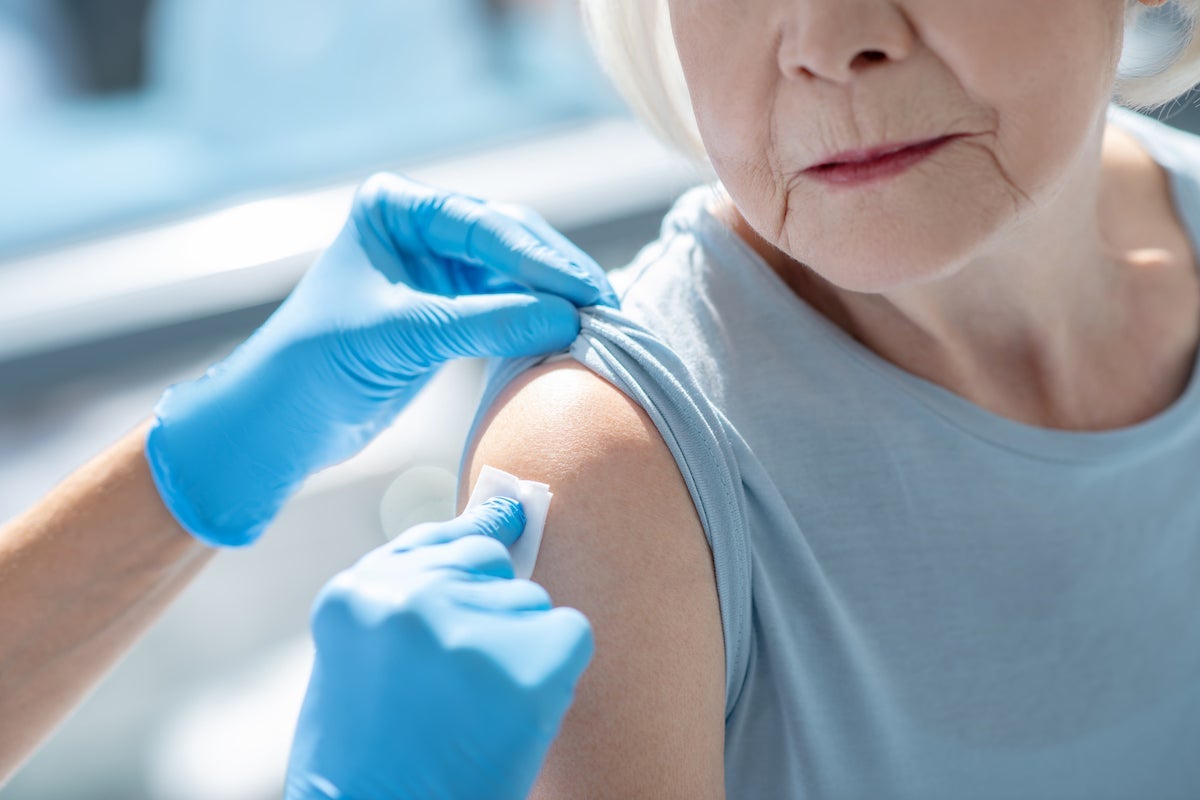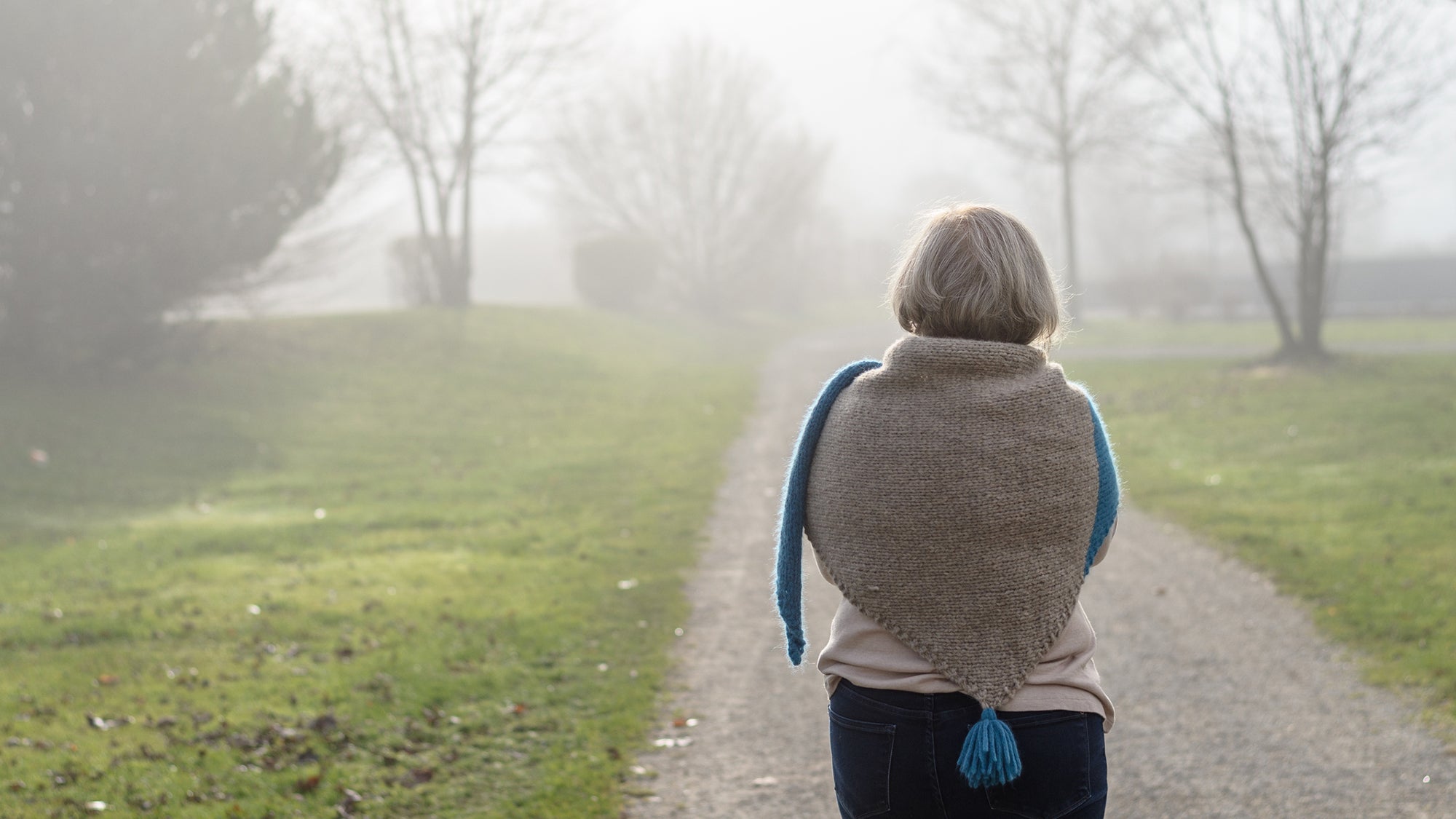Slowing aging to help people live healthier lives

Hannah Smith, PhD ’25, approaches life with a constant sense of curiosity—from working to uncover the molecular mechanisms of aging, to adventuring outdoors and traveling.
In May, Smith earned her degree in the Harvard Griffin Graduate School of Arts and Sciences, studying in the Biological Sciences in Public Health (BPH) program at Harvard T.H. Chan School of Public Health. Working in William Mair’s lab in the Department of Molecular Metabolism, she investigated how to slow down aging in order to stave off chronic diseases. Here, she discusses her research, as well as her future goal of balancing her passions for science and exploring the world.
I grew up in the mountains of western North Carolina, so being outside in nature and preserving the health of outdoor spaces was always important to me. When I got to the University of North Carolina (UNC) at Chapel Hill, I was interested in biology. But all of the biology majors were pre-med. I was more interested in exploring science and finding what I wanted to do in it. Looking to change my major, I found the environmental health sciences program at the UNC Gillings School of Global Public Health, which focuses on the link between human health and the health of the environment. I was really interested in that dynamic, so I did my major through that program.
For a little over two years during undergrad, I worked in the toxicology lab of Shaun McCullough, where we studied the effects of air pollution on individuals. The idea was that our research could help inform policy to regulate air pollution. I was researching human health, but ultimately with a goal of also improving the health of the environment.
For graduate school, I knew I wanted to study basic biology, but I didn’t want to lose the bigger context of public health—so I was excited to find the BPH program. At Harvard Chan School, I wanted to find a lab where I could do basic research on genetics. I didn’t want to pigeonhole myself in environmental health—I wanted to open myself up to other randomness and see where else I could end up, because I’m sure that there are a lot of different fields that I would enjoy. My main goal was to learn how to do bench science—how to find a question and design experiments to answer it—and then figure out what kind of science I would do later.
Aging is the number one risk factor for a lot of different diseases—metabolic diseases like diabetes, neurological diseases such as Alzheimer’s and Parkinson’s, cardiovascular diseases, and cancer. In the Mair lab, we aim to understand the pathways that regulate aging. We’re not necessarily interested in making people live longer, but rather making the years they have healthier. Our motivation is disease prevention—finding how to slow down aging and push these chronic diseases later into life.
Our lab uses a microscopic worm called C. elegans to study aging and how metabolism regulates aging and lifespan. C. elegans is an amazing tool for genetics. We know everything about the worms’ genome, and we can do all these different genetic tricks to turn off genes or add genes or manipulate gene expression [the cell’s process of using the gene’s information to produce proteins]. It’s a really interesting experimental system to me.
My PhD project looked at a specific protein signaling pathway that operates inside the cell. In the pathway, a network of proteins is responsible for sensing nutrient, energy, and stress levels, and then activating other proteins to regulate the cell’s metabolism according to the conditions. If we turn down the activity of this pathway in worms, the animals will think that they are in a high stress or low nutrient environment, so they will slow down their metabolism and live longer. But doing this also makes them smaller, and they don’t reproduce as much. And sometimes they even look a little unhealthier. I was interested in the idea of making animals—and people—live longer, but not making them unhealthy in the process. So my project aimed to fine-tune the pathway in order to extend lifespan without all the negative side effects.
My hypothesis was that maybe targeting the pathway in all cells in the body—which our lab has previously done—is just too much, and the negative side effects had to do with cells in specific tissues. For example, cells in the intestine regulate nutrient absorption and thus growth, while egg and sperm cells regulate fertility. So thinking about targeting the pathway in cell types that don’t affect growth or fertility, I was left with a couple of options, and targeting neurons was one of them.
I found that if I turned down the pathway activity only in the worms’ neurons, they lived a lot longer and remained very healthy. They didn’t have the smaller size and reduced fertility that are commonly associated with this intervention.
[In addition to my results], there has been other research in the field that hints at neurons being a regulator of aging. Neurons are perfectly poised to sense both your external environment, such as the air temperature or the smell of food, and your internal environment, such as an abundance of sugar and oxygen. Based on the perceived internal and external conditions, the neurons can regulate your metabolism and regulate the rates at which you’re living and aging.
If we can change the body’s perception of resources and the environment, we can actually change how an organism ages. We call this theory the central regulation of aging—that aging is regulated through the central nervous system, the neurons, or the brain.
Manipulating the pathway in the brain might be too risky of an intervention for humans, but I think my research shows the promise of the strategy of making aging interventions tissue-specific. I don’t think it’s going to be easy to solve the aging problem, but the field is getting there.
Basic biology research can get very deep in a very small area, and it’s easy to feel like I’m not actually ever going to help anyone. But doing research within a school of public health helps me remember that I’m working on a small piece of a bigger issue. I enjoyed being able to take classes with people who weren’t in my program. For example, I got to talk to people in the epidemiology department who gathered human population data on some of the issues that I was looking at in worms—such as the link between nutrition and metabolic diseases. It helps to keep that link to the human world.
I think [lab researchers] need to be able to explain our work to people in other fields. If we want it to translate to public health, people who write policy are going to have to understand it too. The opportunity to explain research and collaborate with other departments is important, and a place like Harvard Chan School is perfect for that kind of collaboration to happen.
By the end of my PhD, I felt like I needed to take a step back—to look at the things that are interesting to me and then figure out where to go next. The science half of me conflicts with the adventurous, outdoorsy half of me. They come from the same place, a place of curiosity. I want to understand science and human health and genetics, but I also want to see the world and explore. I want to challenge myself intellectually, but I also like to challenge myself physically, like through hiking and rock climbing.
Eventually I want to live a life that can balance the two, but for right now I’m taking a break, not thinking about science at all. I’ve moved out to Utah, and I’ve been climbing out here a bunch. I’m taking this time to reconnect with people that I didn’t get to visit while I was in grad school and to travel, and I feel really lucky to be able to do that. It was hard for me to decide to do this, because it felt a little bit irresponsible, but I knew that I needed a mental break in order to do my best work in my next career step.
Quick hits
Favorite recent trip: Last summer, my partner made the Paris Olympics for rock climbing, so I went there to watch him and support him through that. Afterward, we got to do what I wanted. So we went to Madeira, which is an island off the coast of Portugal, for a beach trip.
What I enjoy about climbing: I like the physical and mental challenge of climbing. It doesn’t only take strength and technique—you have to plan your way up a route or be creative with your movement. It feels like a fun problem to solve.
Indoor vs. outdoor climbing: I climbed in the gym a lot in Boston, but now I’m exploring outdoor climbing and trying to get good at it. I like that I’m out in nature—I have a pair of binoculars, and I’m doing birding in between climbs. I often go to remote places where there are no people. I just love the escape.


